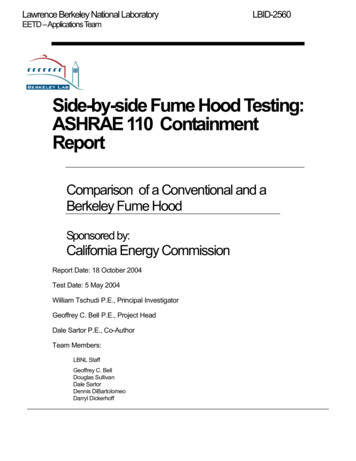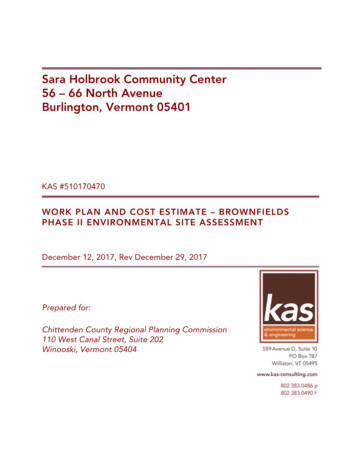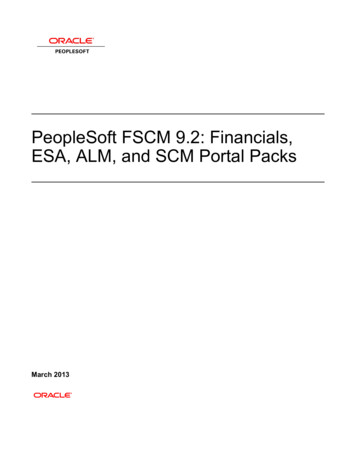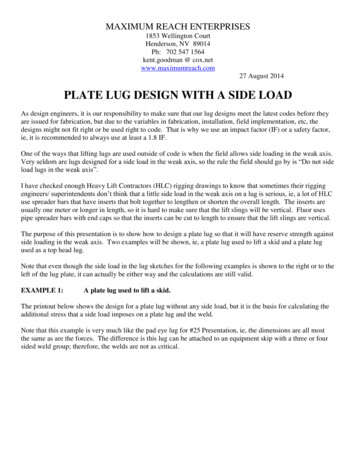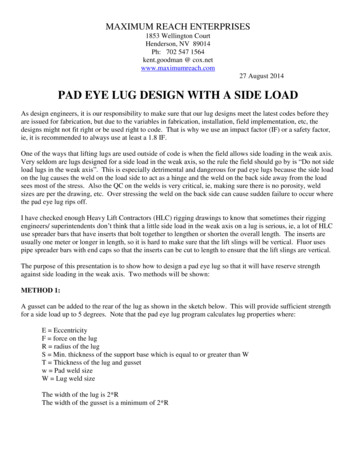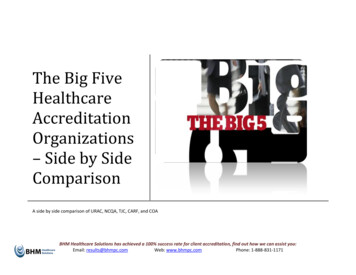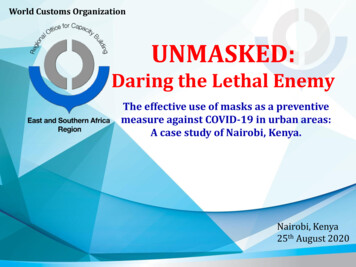
Transcription
World Customs OrganizationUNMASKED:Daring the Lethal EnemyThe effective use of masks as a preventivemeasure against COVID-19 in urban areas:A case study of Nairobi, Kenya.Nairobi, Kenya25th August 2020
WCO ESA BackgroundWorld Customs OrganizationEast and Southern Africa region24 Member countriesLanguages: English, French, Portuguese13 coastal, 11 land-linked countries4 Regional Training Centres (RTCs)
Background of Studyi.Nairobi accounts for the majority of the COVID-19caseload in Kenyaii.Men have higher rates of morbidity and mortalityiii. Masks are believed to be an effective measure(among others) against the spread of COVIDiv. but the appropriate masks have to be worncorrectly to enhance effectiveness.
Objectives of Studyi.To investigate the awareness and adherence of thepublic to guidelines on wearing of masks as apreventive measure against COVID-19 in urban areas.ii. To establish the considerations and attitudes of thepopulace towards the use of masks.
Methodology of Studyi.Adherence to guidelines on wearing of masks- Observational drive-in within societal classes- Upper class, middle class, informal settlements- Estimating Proportions from population of 383,266.i.Considerations and attitudes towards masks- 1,152 respondents, virtual questionnaires, calls.- Google Forms Spreadsheet Data Analysis- Histogram chart presentations
Results of Studyi.Awareness and adherence of the public to wearingof masks as a preventive measure against COVID-19(Coronavirus) in urban areas.
Adherence to Guidelines for Wearing Masks in Public Places80%73%70%60%58% 56%50%64%62%58%42% 44%40%42%38%36%27%30%20%10%Only 58% of populationwearing masks withtwo-thirds of them worethem correctly.0%MaskedUnmaskedOverallMasks Properly WornMenMasks Poorly Worn(Exposed)WomenGender Adherence to the Proper Wearing of Masksin Public Places120%100%73% of the maskedwomen wore themcorrectly comparedto 58% men.80%27%42%60%40%73%58%20%0%MenMasks Properly WornWomenMasks Poorly Worn (Exposed)
Upper Class: 100%wore masks,96% correctly.Upper Class: Gender Adherence to the Proper Wearing of Masksin Public120%100%97%94%80%60%40%20%6%3%0%MenMasks Properly WornWomenMasks Poorly Worn (Exposed)Upper Class: Nosignificant differencein the proper wearingof masks acrossgenders.
Only two thirds ofmasked middle classpopulation wore maskscorrectly.A majority of the80%middle-class women70%60%(76%) adhered to50%proper wearing of40%masks in public30%compared to 56% of20%their male counterparts.10%Middle Class: Gender Adherence to the Proper Wearing of Masksin Public76%56%44%24%0%MenWomenMasks Properly WornMasks Poorly Worn (Exposed)
Only a third of personsin informal settlementswore masks;less than half (48%)wore them correctly.Informal Settlements: Gender Adherence to the Proper Wearing ofMasks in asks Properly WornMasks Poorly Worn (Exposed)Among the maskedpopulation in informalsettlements, morewomen (55%) woretheir masks properly,compared to 48% ofthe men.
Results of Studyii. considerations and attitudes of the populace towardsthe use of masks.
Percentage of Respondents across Different Age Groups (in 8-3031-4041-5051-60Distribution of respondents across different age groups.61 & over
Exclusivity by Sources of Information across Social %10%11%13%10%6%0%0%Upper ClassMiddle ClassSocial mediaTelevisionWord of MouthInformal SettlementsNewspapersRadioWord of mouth is the most preferred source of information in the informalsettlements. Social media and television were more preferred in the higher classes.
Choice of the Type of Mask across Social 0%0%Upper ClassMiddle ClassReusableDisposableInformal SettlementsBothA majority of the respondents from the informal settlements prefer reusable masksunlike the upper class who prefer the disposable masks. A majority of the middleclass use both masks.
Mode of Acquisition of Masks across Social %8%7%4%2%4%4%0%Upper ClassMiddle ClassPurchaseHomemadeGift / FreeInformal SettlementsAll optionsA majority of the population purchased their masks across all the social classes.The upper classes also enjoyed mask freebies compared to the informalsettlement respondents.
Price Consideration in Purchasing Masks across Social 9%8%10%8%0%Upper ClassMiddle ClassHighMediumInformal SettlementsLowThe price of masks was considered highest among the respondents of informalsettlements.6%
Vendor Location Consideration across Social 3%13%Upper ClassMiddle ClassInformal Settlements10%0%HighMediumLowA majority of the respondents from across the social classes highly consider thelocation of their vendors when purchasing the masks.
Conclusion & Recommendationsi.Adult population largely aware of requirement on & importance of wear masks in public places.ii.But population has not fully embraced directive to wear masks & wear them correctly.iii.Adherence to correct wearing of masks higher up social classes & lowest in informal settlements.iv.Women have greater compliance levels across the social divide compared to men.v.Need for sustained campaigns on wearing face masks, alongside other measures.vi.Targeted campaigns towards men to improve on adherence to the proper wearing of masks.vii. Utilise preferred sources of information for specific classes.viii. Avail more cost-friendly, appropriate, masks to the vulnerable & informal settlements.ix.More studies needed on rates & nature of disposal and cleaning of disposable & reusable masks.
ContactsLarry LizaDirectorWorld Customs OrganizationEast & Southern AfricaRegional Office for Capacity Building,Elgon Road, Upper HillP. O. Box 50581- 00200NAIROB, KENYA.Tel 254 70 901 1615Email: rocb@wcoesarocb.orgwww.wcoesarocb.org13
UNMASKED: Daring the Lethal Enemy World Customs Organization Nairobi, Kenya 25th August 2020 The effective use of masks as a preventive measure against COVID-19 in urban areas: A case study of Nairobi, Kenya. East and Southern Africa region 24 Member countries Languages: English, French, Portuguese 13 coastal, 11 land-linked countries 4 Regional Training Centres (RTCs) WCO ESA
